Birding knowhow: fieldcraft
Or how to be a good birder when actually in the field
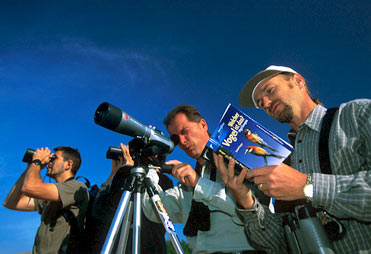
Well kitted out. “Hey guys, what does <Vogel> mean?”
It’s all very well being kitted out with cutting edge binoculars, telescope, tripod and the latest field guide, but all that costly birding gear will do you little good if you can’t get close enough to a bird to see any of its plumage details, or if it flits away before you even clutch your binoculars. That’s where birding fieldcraft comes in: an important but all too often neglected aspect of modern birding that could greatly improve your birding success.
As birders come in almost as many forms as the birds themselves it seems fair to start with what would appear to the more initiated as rather banal advice. However, based on personal observations of birdwatching fauna it should not go unmentioned: binocular cases are for the home only! Whatever reasons you may have for wanting to keep your binoculars in their case when out in the field (avoiding knocks, keeping them clean, looking trendy, etc.) this practice is contrary and even pernicious to your reason for being out in the field in the first place. Binoculars are a vital tool for any birder and they should be ready for use at all times. Remember the bird won’t usually wait around for you to fumble with straps, lids and lens caps. If what worries you is keeping your binoculars dry in wet weather then get a rain guard or grip them under your jacket in Napoleonic style, but do not keep them sealed in a velvet-lined binocular case!
Essentially, though, a birder’s level of fieldcraft will be a result of his/her attitudes, preparation and resourcefulness. For the sake of space the latter aspect is best left for a later moment. What is meant here by attitudes is the birder’s preconceived ideas that lead him to act in a certain way when out in the field. Preparation concerns things such as clothing and other birding gear, planning and perception.
Attitudes. A birder who sees a flock of gulls and says “Ah, a flock of gulls” and moves on is missing out on an important birding experience. Faced with a flock of gulls, ducks or waders numbering anywhere from 30 to 3,000 the keen and knowledgeable birder would fidget or twitch in response to a sudden surge of adrenaline. Birds of a feather flock together for sure, but he knows that the average such flock offers opportunities of finding birds with different plumages, moult stages, different species and, with a lot of luck, a rarity.
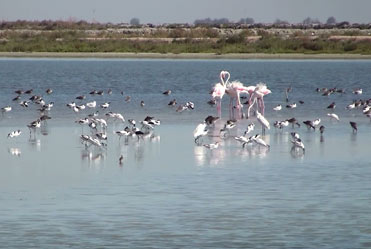
A flock of water birds, or a birding bonanza?
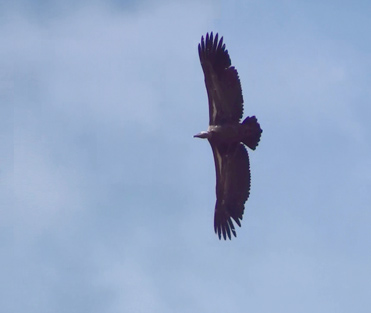
Not all vultures will be Rüppell’s Vultures, even in Spain!
Rarities and attitudes towards them could occupy a category all of their own but a basic message would be to bear in mind the possibility of finding a rarity without taking this to obsession level. Remember that rarities are rare, so always consider a more common candidate when trying to identify a particular bird.
Preparation. If it is possible to plan your route beforehand then do so to avoid looking into the sun as much as possible. That means taking into account access routes and times of day; it’s a simple task that at certain sites can deliver large rewards in terms of the quality of your birding experience. Wearing the right clothing is also important. Think about sunhats, waterproofs, climbing boots or Wellingtons, but also ask yourself about colour and rustle. Bright red jackets do not blend in with most environments, and if you rustle or swish with every step you won’t be able to hear the birds but they will most certainly hear you.
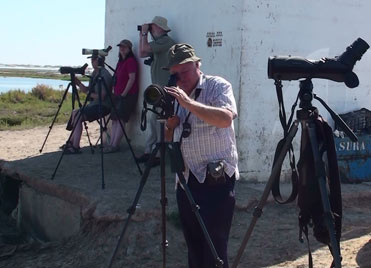
Go out in the midday sun? Only if there’s shade and lots of birds!

Dressed for a nice walk in the rain, but not for birding.
Get used to listening to birds, not just looking. Most birds can be identified on song or calls alone and if you master local bird songs and calls you will be able to know exactly what is around you without having to spot every single bird. The vocalisation learning process is a long one, which can be helped along by listening to CDs, downloading birdsong and calls from the Internet, and most of all by going into the field and listening hard. Long the process may be, but it is also extremely rewarding.
Have a notebook and be prepared to take field notes, recording details such as place, date, companions names, species and numbers detected. A notebook is a very handy tool when faced with a possible rarity, and also makes for interesting reading at a later date.
Listen again. Be an active listener by asking yourself if you really are listening. There’s almost always a bird calling or singing around you, have you heard it and identified it?
Get to know your birds, including their habitat requirements and selection. You will then be able to come up with such gems as “This looks ideal for a (bird name),” as you survey a new landscape, raise your binoculars and instantly set eyes on the bird you have just mentioned. At such times its hard not to swell with self-gratification.
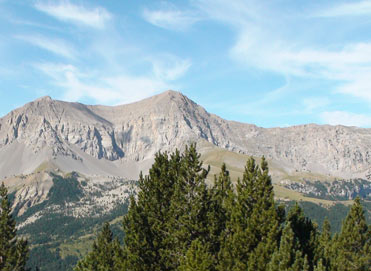
Now this looks like good habitat for….
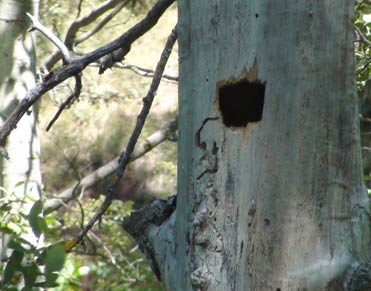
…a Black Woodpecker!
You are allowed to wear any kind of silly hat that you like. There is no firm evidence that even the wackiest designs have any influence on your success or failure as a birder, although it really is better if your ultimate choice is suited to local weather conditions!
One more thing: start now – what’s that bird calling outside?
Birding Fieldcraft and Techniques
Keywords: birding, bird, fieldcraft, binoculars, birder, rarity, flock, field.
